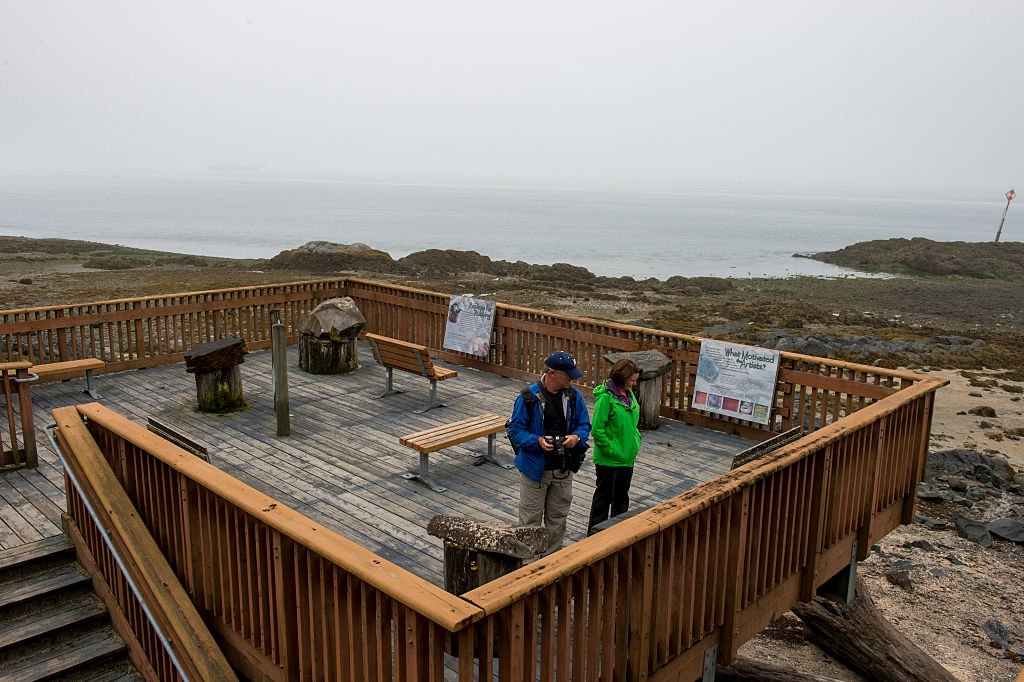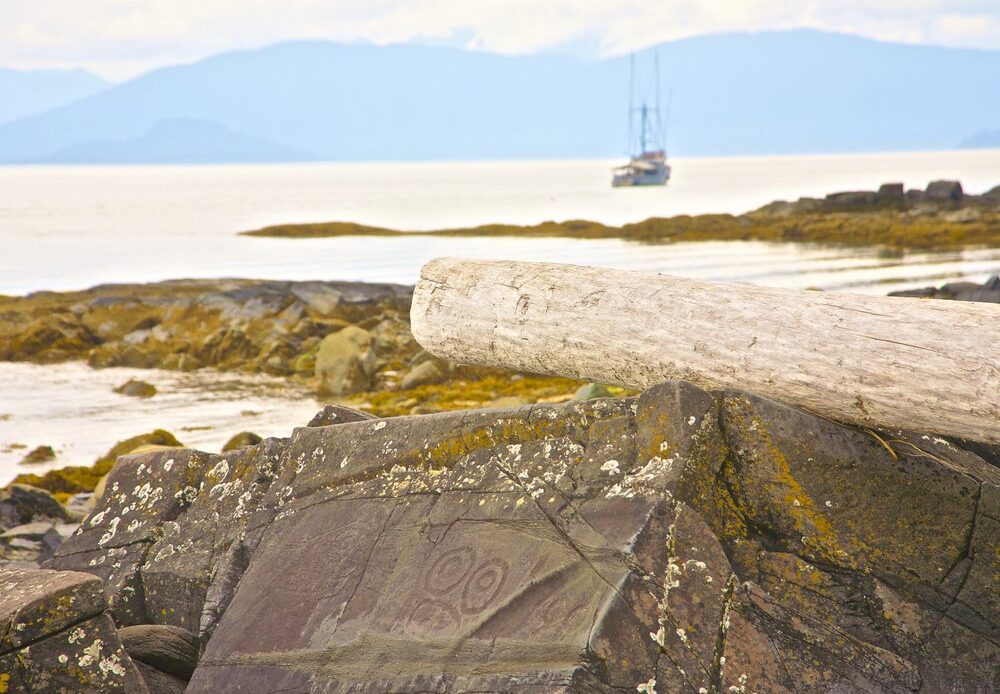The rocky beach in Wrangell, Alaska, is decorated with more than 40 petroglyphs.
Barry Winiker/Getty Images
Water laps gently against the rocky shores of Petroglyph Beach State Historic Site in Wrangell, an island town that’s part of Alaska’s Inside Passage, an archipelago that drips like a chain of pearls along the state’s southeast coast. I have to watch my footing as I amble along the beach, dodging thousands of craggy rocks that are beginning to poke up out of the sand.
It’s a sunny summer morning in late August, and the tide has already gone out for the day, exposing a rocky wonderland ripe for exploration. Unlike at most beaches, where people go to comb for seashells or sea glass, here I’m on the hunt for the dozens of petroglyphs that pepper the coastline’s boulders and bedrock. (The word petroglyph is derived from the Greek words petra and glyph, which translate to “rock” and “carving.”)
While there are numerous hypotheses about the origins of the more than 40 rock carvings etched here—one of the highest known concentrations of petroglyphs in Alaska and around the world—the one most often agreed upon by archaeologists is that they were etched roughly 8,000 years ago by the Tlingit (pronounced CLINK-it), an Alaska Native group that continues to inhabit the state’s southeastern archipelago. But when it comes to the petroglyphs’ intended purpose, that’s where things remain a mystery.
Visitors look at an interpretive display at Petroglyph Beach State Historic Park. Wolfgang Kaehler/LightRocket via Getty Images
According to a placard at the beach’s entry, the petroglyphs may have served any number of purposes, including being territorial markers to warn enemies that they were encroaching on settled land, a historical record commemorating a significant event such as a battle or an epic tidal wave that happened here, or underwater beacons to help coax salmon to swim to the mouths of the rivers and streams that feed into the Inside Passage straits. Others believe the drawings mark an important fishing site or settlement.
“These specific symbols are very unique to Southeastern Alaska,” says Nicholas Schmuck, a special projects archaeologist with the Alaska Department of Natural Resources. “Every time you get a good…
Click Here to Read the Full Original Article at Travel | smithsonianmag.com…
